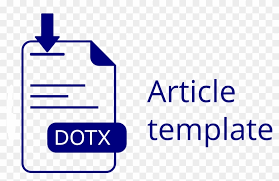Optimasi Koagulan Polialumunium Klorida pada Percobaan Jar Test Berdasarkan Penurunan Konsentrasi Parameter Chemical Oxygen Demand (COD) Air Limbah menggunakan Metode Respon Permukaan
DOI: 10.55075/wa.v46i1.86Sari
Industri minyak wangi menghasilkan air limbah yang mengandung beberapa jenis bahan kimia yang dapat mencemari lingkungan. Proses koagulasi-flokulasi merupakan salah satu metode dalam pengolahan air limbah dengan penambahan koagulan yang bertujuan untuk menghilangkan padatan tersuspensi dan zat organik yang dapat menyebabkan kekeruhan serta bau. Penambahan koagulan pada Waste water treatment plant (WWTP) tidak dilakukan secara kuantitatif, sehingga perlu dilakukan percobaan dengan metode jar test. Tujuan percobaan untuk mengetahui pH dan dosis optimum koagulan poly alumunium chloride (PAC) pada percobaan jar test berdasarkan penurunan konsentrasi chemical oxygen demand (COD) air limbah menggunakan metode respon permukaan. Hasil uji parameter COD dibandingkan dengan Surat Keputusan Gubernur Tingkat 1 Jawa Barat (SK Gub TK 1 Jabar) No. 6 Tahun 1999 tentang Baku Mutu Limbah Cair Bagi Kegiatan Industri di Jawa Barat. Percobaan ini Berdasarkan hasil percobaan diperoleh kondisi optimum koagulan PAC pada pH air limbah 5,9 dengan dosis koagulan optimum pada 300 mg/L. Hasil pengujian parameter COD memberikan nilai efisiensi sebesar 49,89%. Percobaan yang dilakukan membuktikan bahwa koagulan PAC mampu menurunkan kadar pada parameter COD dengan nilai efisiensi yang cukup besar.
Teks Lengkap:
PDFReferensi
Anugrah, T. 2013. Efektivitas Campuran Poli (Aluminium Klorida) (PAC) dan Aluminium Sulfat (Tawas) sebagai Koagulan dalam Pengolahan Air Bersih. Skripsi. Departemen Manajemen Sumberdaya Perairan FPIK Institut Pertanian Bogor. Bogor.
Ayoub, G.M., Hamzeh, A., Semerjian, L. (2011). Post treatment of tannery wastewater using lime/bittern coagulation and activated carbon adsorption. Desalination. 273. 2-3.
Hameed, Y.T., Idris, A., Hussain, S.A., Abdullah, A.(2016). A tannin-based agent for coagulation and flocculation of municipal wastewater: Chemical composition, performance assessment compared to Polyaluminum chloride, and application in a pilot plant. Journal of Environmental Management. 184. 494-503.
Kumar, P., Prasad, B., Mishra, I. M., & Chand, S. (2008). Decolorization and COD reduction of dyeing wastewater from a cotton textile mill using thermolysis and coagulation. Journal of Hazardous Materials, 153(1–2), 635–645.
Muralimohan, N., Palanisamy, T., Vimaladevi, M.N. (2014). Experimental Study on Removal Efficiency of Blended Coagulants in Textile Wastewater Treatment. International Journal of Research in Engineering& Technology. 2. 15-20
Oktariany, A. dan Kartoharjono, S. (2018). Effect of Coagulant Dosage on Tofu Industry Wastewater Treatment in Combination with Ultrafiltration Process using Polysulfone Membrane. E3S Web of Conferences. 67.
Putri, S.S. dan Kartoharjono S. (2018). Combination of Coagulation-flocculation and Ultrafiltration Processes using Cellulose Acetate Membrane for Wastewater Treatment of Tofu Industry. E3S Web of Conferences. 67.
Sabur, M.A., Khan, A.A., Saflullah, S. (2012). Treatmenet of Textile Wastewater by Coagilation Precipitation Method. Journal of Scientific Research. 4. 623-633.
Simonich, S. L., Begley, W. M., Debaere, G., & Eckhoff, W. S. (2000). Trace analysis of fragrance materials in wastewater and treated wastewater. Environmental Science and Technology, 34(6), 959–965. https://doi.org/10.1021/es991018g
Simonich, S. L., Federle, T. W., Eckhoff, W. S., Rottiers, A., Webb, S., Sabaliunas, D., & De Wolf, W. (2002). Removal of fragrance materials during U.S. and European wastewater treatment. Environmental Science and Technology, 36(13), 2839–2847. https://doi.org/10.1021/es025503e
Sun, P., Casteel, K., Dai, H., Wehmeyer, K. R., Kiel, B., & Federle, T. (2014). Distributions of polycyclic musk fragrance in wastewater treatment plant (WWTP) effluents and sludges in the United States. Science of the Total Environment, 493, 1073–1078. https://doi.org/10.1016/j.scitotenv.2014.04.038
Zakaria, A., Sauri, S., Fadela, D. M., & Wardhani, P. S. A. (2021). Efisiensi Penurunan Kadar COD, TSS, dan TDS pada Air Limbah Industri Pangan menggunakan Koagulan Poly Alumunium Chloride dengan metode Jar Test. Warta Akab, 45(2), 98–104.
Refbacks
- Saat ini tidak ada refbacks.

















